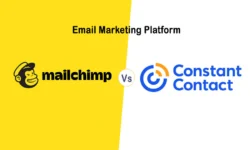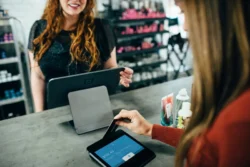Marketing trends come and go every year. Some are worth jumping on, while others are best ignored.
In the world of branding, certain trends are worth getting on this year as well. And this is where the big challenge lies. With so many trends to choose from, shortlisting them can be quite difficult.
If you haven’t decided which branding trends your business should follow this year and you’re already worried about missing many benefits since the first quarter is nearly drawing to a close, a renowned branding agency in Dubai recommends jumping on these seven:
1. Personalizing your brand
Although personalization has always been one of the top branding trends in the past years, it is something that will continue to this day and in the years to come.
Consumers will continue to relate and be drawn to people and not products. If your brand resonates with customers on a personal level, they are more likely to trust your company. And this will do a lot of good things for your business.
Connecting with consumers means building authentic relationships with them. As such, this should be one of your long-term goals. You can further work on this by avoiding hard-selling and focusing on giving them a more personalized experience.
Building your brand personality is one way of letting people know that there is a human behind your company. You can then promote this through storytelling, which is an essential component of branding.
By including storytelling in your branding and marketing strategies, you can connect with people on a deeper level.
You can also give your brand a human touch by giving people a peek of what happens behind the scenes. Live stream or share videos about how your products are made or what your employees do in your shops. Do the same for events, too.
Also, encourage your employees to share their stories on social media.
By following this trend this year, you will get more from your branding campaign.
2. Leveraging technology
Artificial Intelligence (AI) and other pieces of technology have made handling various business processes easier and more efficient. This includes marketing.
Chatbots, for instance, have been making it easier for businesses to interact with consumers. Using them for conversational marketing allows companies to guide users throughout their buyer journey. By tweaking this tool, you can use them for branding and social purposes too.
Using data from past and current customers will also help you give each online visitor a more customized experience. Regardless of which stage they are in the sales funnel, you can add human empathy as your AI guides them through their journey.
These humanized AI experiences can also help you uncover insights that will help you understand your consumers better and improve their interactions with your brand.
3. Prioritizing better mobile user experience
With more and more people using smartphones and tablets, your company needs to work on your mobile presence. You, therefore, need to make sure all your content fits and works on all small devices.
These types of content should include your website and emails.
You can start making your content more mobile-friendly by creating engaging Call to Actions (CTAs) that catch attention easily. You can do this by using bright colors that contrast with the background.
For any written texts, use fonts from your brand style guide but ensure they are clear and prominent. Create short yet concise subject lines and paragraphs and make sure all content pieces are creative and exciting.
4. Supporting and joining online communities
Branded communities are making waves on the Internet. These online forums or groups act as platforms where consumers can talk about brand-related topics and share advice and tips.
These communities also allow brands to talk about their products and listen and understand their customers’ needs without trying to sell anything.
When you listen to and take into consideration what your customers have to say regarding your products and any new additions to your lineup, you show that you value their insights and opinions.
When your customers realize this and are happy with your involvement in their group, they will become your brand ambassadors, inspiring others to use your products and encouraging them to share constructive feedback and suggestions, as well.
A lot of well-known brands are also using these online communities to know what their customers want, any changes in their preferences and habits, and their sources of motivation.
5. Being active offline
No matter how busy your team is with serving the online audience, never neglect your offline users. This means trying to build an offline community as well.
When you become active in local communities, people that do not use the Internet frequently will get to know more about your brand. Online users, on the other hand, will likely appreciate and trust you more when they actually meet and interact with you.
You will also get to connect with more consumers in a more profound sense.
Additionally, it is worth noting that the face-to-face feedbacks you obtain can give you more data that you can use to boost online engagements.
Conducting workshops, seminars, meetings, and other types of events is a good way of reaching out to your offline consumers and building a community with them.
6. Mixing local and global concepts
Many large brands have also started developing a global mindset while acting locally. This means that these companies are tailoring their marketing campaigns based on the location of their audience, their tastes, preferences, and habits.
By adopting your products to a specific language, culture, and other key local requirements, you ensure your brand connects to more people emotionally. Additionally, doing so will give your consumers a sense of belonging and will justify their identities.
Lastly, by acting on a local level, you can save money on resources that you can get at lower prices and a productive workforce.
7. Adopting a responsive brand logo
Lastly, your company logo is your ultimate brand representation. As such, you may think twice about making even the small changes to this important element.
However, you can follow the footsteps of Google, Slack, and Disney and other global brands, which will surely be a popular trend this year, by adopting a responsive logo.
A responsive or dynamic logo is one that you can tweak in terms of its shape, size, color, and complexity so that you can adapt it to whatever medium it is placed against. Basically, this is about changing your logo based on your needs.
For instance, you can use the original logo for your website and design a different one for your app and mobile branding or signs.
Changing or modifying your logo can help keep your brand fresh and exciting.
With these trends in mind, you will avoid having a brand that gets left behind. You will keep up with the competition and even surge past them.
AUTHOR BIO
Hasan Fadlallah is a Serial Entrepreneur – Founder & CEO of Brand Lounge, the region’s leading and award-winning branding consultancy, whose role is to help organizations align their business behind an idea that will deliver success time and again. Equipped with over 20 years of professional consulting experience, today he advises businesses throughout the Gulf and Africa on brand development and in 2014 was recognized by the World Brand Congress who awarded him the prestigious Brand Leadership award in Brand Excellence.







